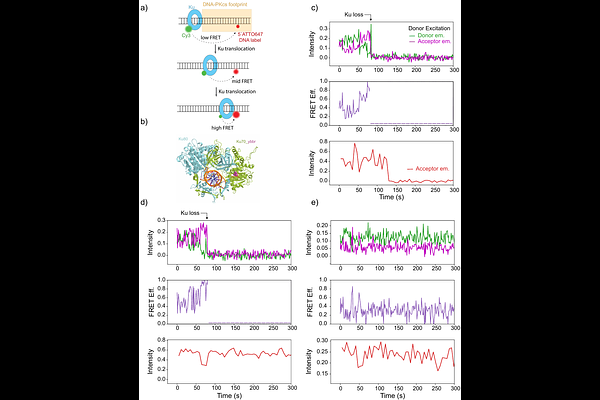The NHEJ machinery is translocated off DNA ends toenable resection

The NHEJ machinery is translocated off DNA ends toenable resection
Sathyanarayana, P.; Wu, Y.; Walter, J. C.; Loparo, J. J.
AbstractError-prone non-homologous end joining (NHEJ) and homologous recombination (HR) compete to repair DNA double strand breaks. Given that NHEJ factors such as Ku and DNA-PKcs are rapidly recruited to DSBs and sterically occlude ends, they must be removed to enable 5\' DNA end resection, the commitment step of HR. While resection is well characterized, how the NHEJ machinery is displaced from DNA ends has remained poorly understood. Here, we performed single-molecule imaging in Xenopus laevis egg extracts to monitor the removal of NHEJ factors from DNA ends while simultaneously tracking the progress of DNA end resection. We find that MRN and CtIP are essential to evict the core NHEJ factor Ku from DNA ends. Surprisingly, while Ku removal and resection of the 5\' end are normally coordinated, these processes arise from distinct activities of the MRN complex and are differentially regulated by the action of cyclin dependent kinases and ATM. By directly imaging the position of Ku on DNA using smFRET, we found that Ku is translocated independently of DNA end resection in an ATP-dependent manner that requires both MRN and CtIP. In summary, our results provide a new mechanistic framework to understand how eviction of the NHEJ machinery is coordinated with DNA resection to initiate HR.